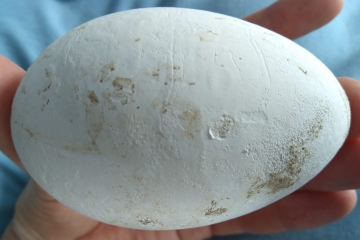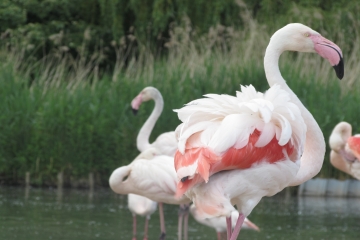Flamingo researcher auf Deutsch
This week I have been in the same town of Bielefeld in north-east Germany, attending a workshop on developments in the field of animal social networks; how we can better understand what animals “get” out of the relationships that they form and why these relationships are important. For my PhD, I am hoping to use the tools of social network analysis (to draw and visualise who is interacting with whom) to shed light on the world of flamingo behaviour, the “friendships” they make and what these relationships can tell us about the birds’ lives in captivity. There were many interesting concepts covered at the workshop, including an insight into dominance relationships between red junglefowl (the ancestor of the domestic chicken) useful research models because they are extremely promiscuous shall we say (!), the breeding behaviour of tropical manakins (small birds that jump and dance around to attract a mate – if you don’t believe me check out this Youtube clip http://www.youtube.com/watch?v=eI_quJRRGxk, they are amazing!) and the friendships that exist between groups of blue tits and great tits as they visit bird feeders (perhaps something that you can observe in your own back garden).
To give you an idea of what a social network is, I have drawn a very simply one from two months’ worth of my behavioural data on the small Andean flamingo flock at WWT Slimbridge. The birds are represented as small dots (called “nodes”) and the joining lines (called “edges”) link together birds that are interacting and / or associating with each other.

So you can see from this diagram that there are several birds in this group that are joined up very frequently to others and these would be important individuals for keeping the flock together. Birds that appear on the edge are those with fewer social interactions and hence might not be as important to overall group cohesion. I will pick out and explain in more detail some of these specific relationships in future posts. As my data collection progresses, I will be able to see behind the dots and lines in this diagram to better understand why each bird is associating with its cage mates in the way that it is.
In the meantime, I will leave you with a lovely photo of flamingo interaction to show you just how friendly these birds can be to each other.


